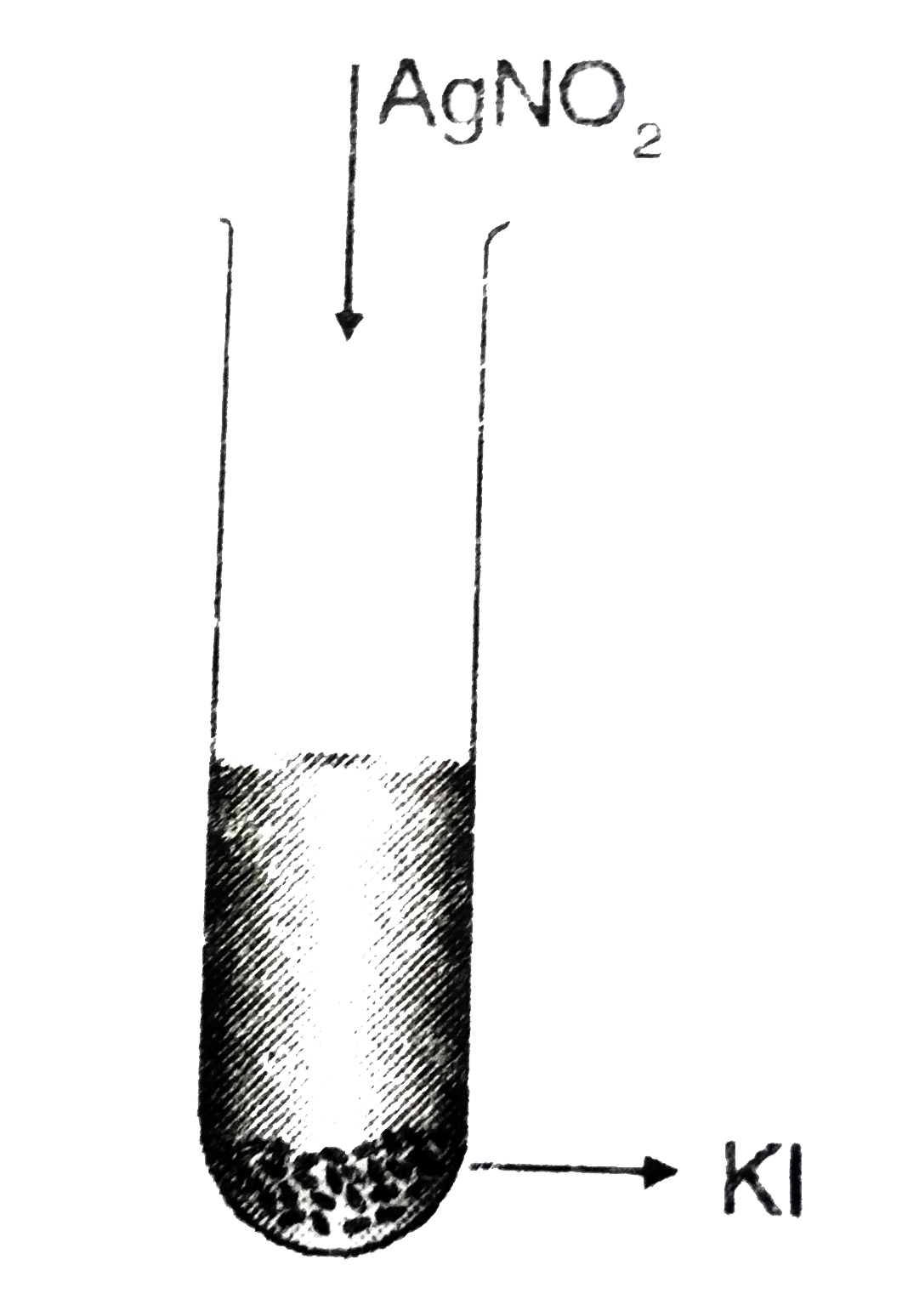Which of the following is most effective in coagulating positively charged hydrated ferric oxide sol ?
(i) NaNO3 (ii) Na2SO4 (iii) (NH4)3PO4
To determine which of the given options is most effective in coagulating positively charged hydrated ferric oxide sol, we can follow these steps:
Step 1: Identify the charge of the sol
Hydrated ferric oxide sol is positively charged. Therefore, we need to look for an anion (negatively charged ion) that can neutralize this positive charge.
Hint: Remember that coagulation occurs when oppositely charged particles attract each other.
Step 2: Analyze the options based on their anions
We have three options to consider:
1. NaNO₃ - The anion is NO₃⁻ (nitrate) with a valency of -1.
2. Na₂SO₄ - The anion is SO₄²⁻ (sulfate) with a valency of -2.
3. (NH₄)₃PO₄ - The anion is PO₄³⁻ (phosphate) with a valency of -3.
Hint: Look at the valency of the anions to determine their effectiveness in coagulation.
Step 3: Compare the valencies of the anions
According to the Hardy-Schulze rule, the coagulating power is directly proportional to the valency of the ion. The higher the negative valency, the more effective the ion will be in coagulating the positively charged sol.
- NO₃⁻ has a valency of -1.
- SO₄²⁻ has a valency of -2.
- PO₄³⁻ has a valency of -3.
Hint: Identify which anion has the highest negative valency.
Step 4: Determine the most effective coagulating agent
From our comparison:
- PO₄³⁻ has the highest negative valency of -3. Therefore, it will be the most effective in coagulating the positively charged hydrated ferric oxide sol.
Hint: The ion with the highest negative charge will be the best at neutralizing the positive charge of the sol.
Conclusion
The most effective coagulating agent for positively charged hydrated ferric oxide sol among the given options is (NH₄)₃PO₄.
Final Answer: (NH₄)₃PO₄
Hydrated ferric oxide sol is positively charged. Therefore, we need to look for an anion (negatively charged ion) that can neutralize this positive charge.
We have three options to consider:
1. NaNO₃ - The anion is NO₃⁻ (nitrate) with a valency of -1.
2. Na₂SO₄ - The anion is SO₄²⁻ (sulfate) with a valency of -2.
3. (NH₄)₃PO₄ - The anion is PO₄³⁻ (phosphate) with a valency of -3.
According to the Hardy-Schulze rule, the coagulating power is directly proportional to the valency of the ion. The higher the negative valency, the more effective the ion will be in coagulating the positively charged sol.
- SO₄²⁻ has a valency of -2.
- PO₄³⁻ has a valency of -3.
From our comparison:
- PO₄³⁻ has the highest negative valency of -3. Therefore, it will be the most effective in coagulating the positively charged hydrated ferric oxide sol.
The most effective coagulating agent for positively charged hydrated ferric oxide sol among the given options is (NH₄)₃PO₄.
Similar Questions
Which of the following ions will be most effective in coagulating the As2S3 sol?
View Solutionwhich of the following is most effective in coagulating ferric hydroxide sol?
a. KCl
b. FeCl3
c. Na2SO4
d. K3[Fe(CN)6]
View Solution(a) A colloidal sol is prepared by the given method in figure. What is the charge of AgI colloidal particles in the test tube ? How is the sol formed, represented?
 (b) Explain how the phenomenon of adsorption finds application in Heterogeneous catalysis.
(b) Explain how the phenomenon of adsorption finds application in Heterogeneous catalysis.
(c) Which of the following electroytes is the most effective for the coagulation of Fe(OH)3 sol which is a positively charged sol?
NaCI,Na2SO4,Na3PO4
View SolutionWhich of the following ionic substances will be most effective in precipitating the sulphur sol?
a. KCl
BaCl2
c. Fe2(SO4)3
d. Na3PO4
View SolutionBa(NO3)2+Na2SO4→BaSO4⏐↓+2NaNO3
View SolutionBa(NO3)2+Na2SO4→BaSO4⏐↓+2NaNO3
View SolutionWhich one of the following electrolytes is most effective for the coagulation of Fe(OH)3sol and why?
NaCl,Na2SO4,Na3PO4
View Solutionwhat is the correct sequence of the decreasing coagultion value of the following electrolyte for the coagultion of ferric hydroxide sol ?
(I)Na3PO4(II)KCl(III)K2SO4(IV)K4[Fe(CN)6]
View SolutionAmong the following electrolytes, which is the most effective coagulation agent for Sb2S3 solution?
(a)Na2SO4
(b)CaCl2
(c)Al2(SO4)3
(d)NH4Cl
View SolutionHow many of the following will volatilize on heating leaving no solid residue ?
(i)NaNO3 (ii)NH4NO3 (iii)Ca(H2PO2) (iv)NH4HCO3
(v)N2H5HSO3 (vi)AlCl3 (vii)[Cu(NH3)4]SO4 (viii)FeSO4,7H2O
View Solution
